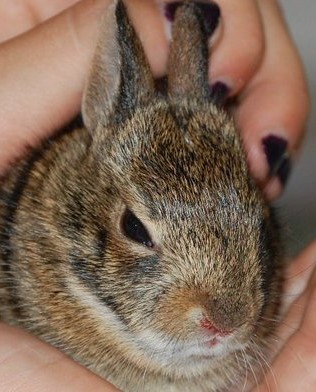
Orphaned Wildlife
Each spring we see a new generation of young animals beginning to make their way in the world. Some may still be under their parent’s care or just striking it out on their own. Being young and naïve in the world, some individuals may find themselves in need of assistance. The most common young animals found in residential areas, are birds and rabbits. Today we will discuss rabbits and cover birds in the following article.
There are a few guidelines that must be addressed before we discuss caring for orphaned rabbits, and all wildlife in general. These are wild animals and even young wildlife can be dangerous, safety is a priority. Do not attempt to raise and/or care for injured wildlife. The ultimate goal is to release wildlife back into the wild. Special feeding and cages are used to allow injured wildlife to build up strength and practice hunting before their release. Rehabilitators are licensed by the state and/or federal governments, not to mention they have spent many years learning about the animals they care for. In many states it is illegal to possess a wild animal without a permit. Many wild animals have internal and external parasites that can be transmitted to humans.
Baby rabbits spend the majority of their time without their mother, who only visits the nest at dusk and dawn to protect the nest from predators. It is very common for good Samaritans to think the rabbit nest has been abandoned or the babies are orphaned. If a baby rabbit is found outside an intact nest you can place back in the nest and cover it with twigs and leaves. Rabbits leave the nest when they are able to hop, about 5 inches long, their eyes and ears are open. If you find a baby rabbit that is injured (bleeding, has puncture wounds, etc.), appears weak, thin, wrinkly baggy skin, or has been in a cat’s mouth, contact a rehabilitator.
If you need to intervene, the first step is to prepare a container for them. Line the inside of a pet carrier, shoebox, or box with a soft cloth. If using a box, don’t forget to add a few holes for ventilation. Wearing gloves, gently transfer the rabbit to the prepared container. Until the rehabilitators arrive, keep the rabbit warm by placing a heating pad under ½ of the box. This allows the rabbit a place to cool down, if it becomes too warm.
To find a licensed wildlife rehabilitator, you can contact your local Humane Society, Audubon Society, local animal control, NRWA, and the International Wildlife Rehabilitation Council (IWRC).




